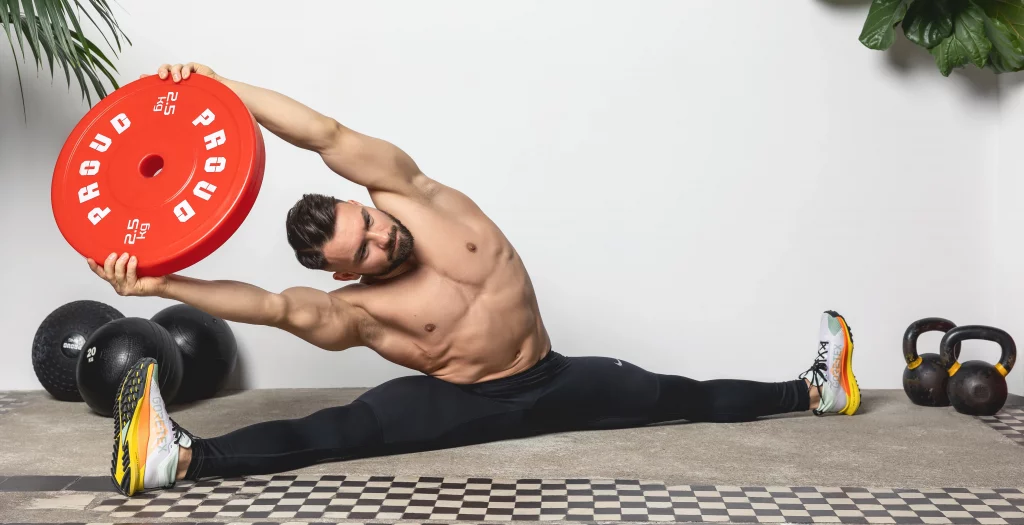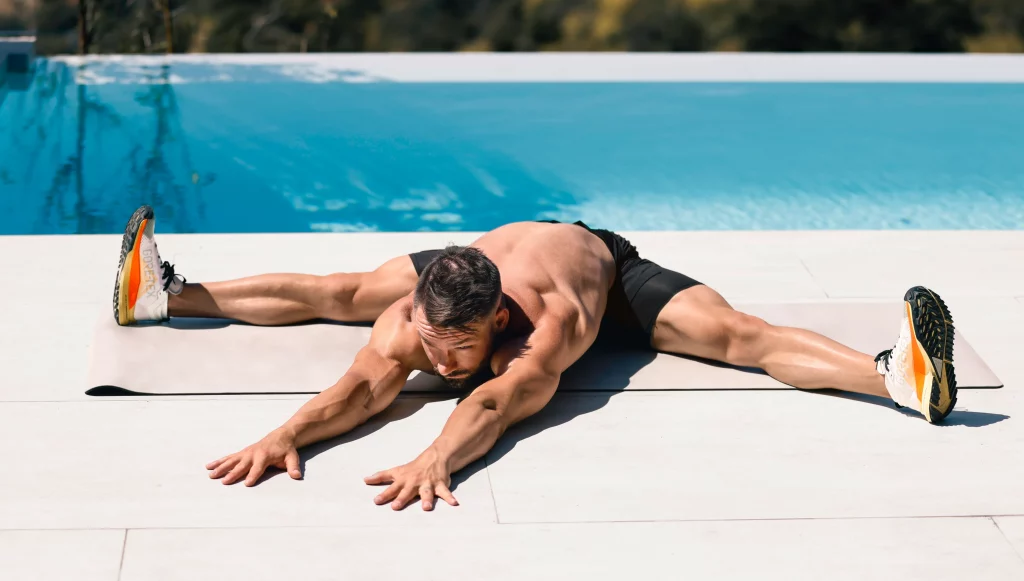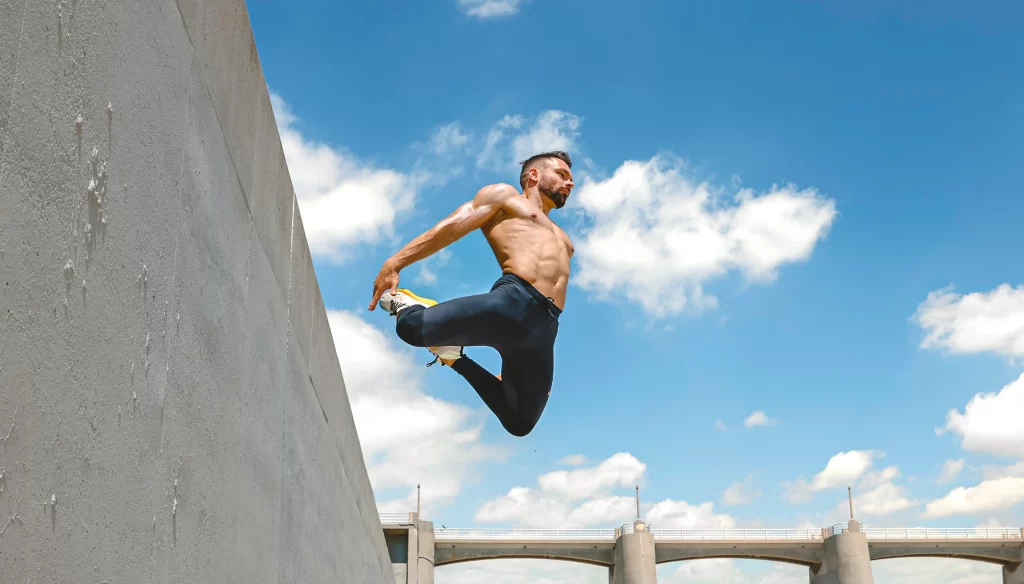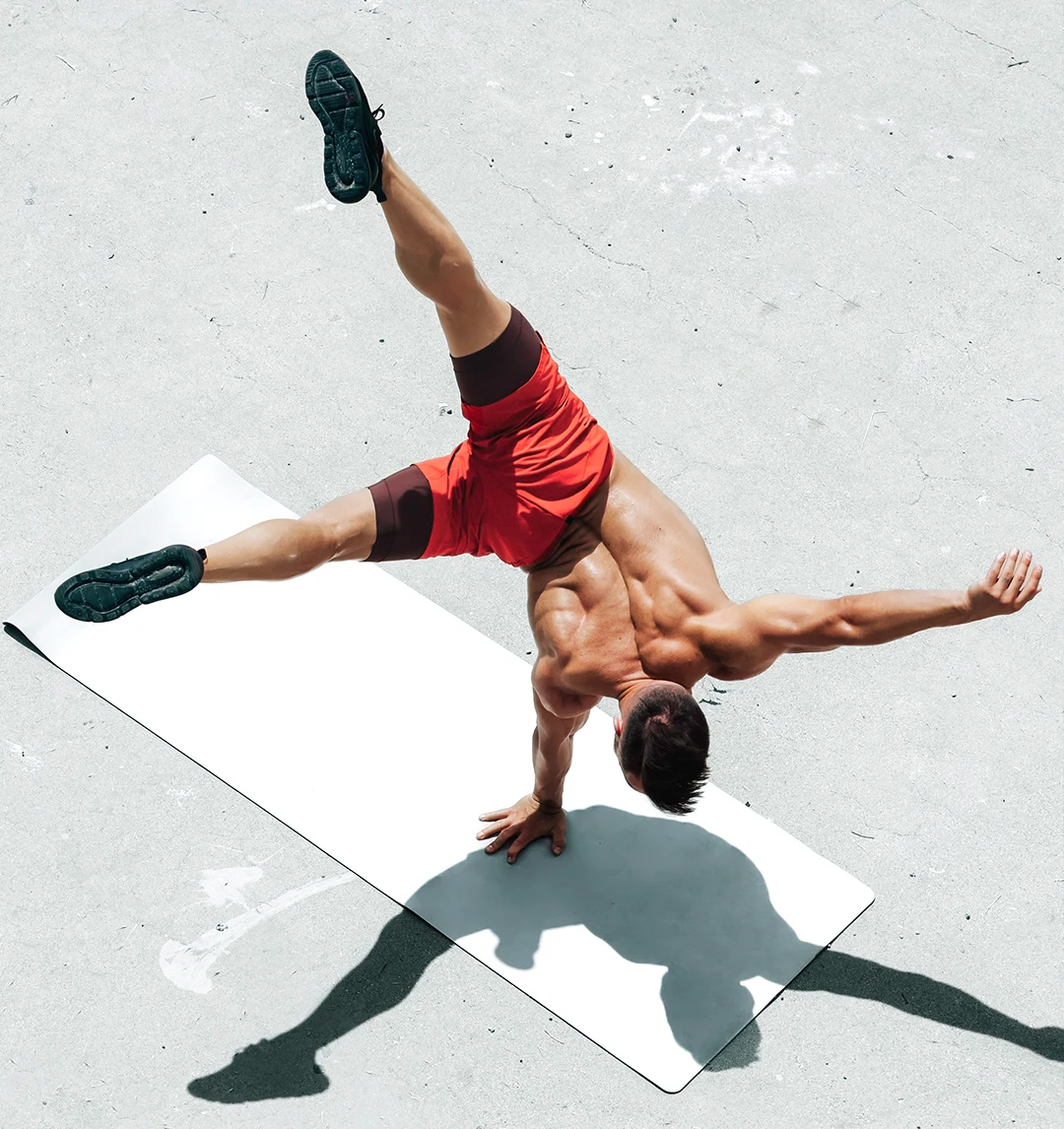Why is endurance training essential?
Honestly, I know it is not easy to start but once endurance training is part of your regular routine you will see that the health benefits are simply overwhelming. Not only are the changes inside of your body actually measurable but also will you feel significantly fitter and simply better.
Important to notice here is that the goal of endurance training is not to train the legs through running. Training the legs is simply a by-product. The actual focus lies on training the heart, lunges and mitochondria in the cells.
Train harder
Endurance training will improve the efficiency of your cardiovascular system and lung capacity allowing them to work better. Additionally, new capillaries will form out of preexisting blood vessels. These will be able to supply more oxygen rich blood to your organs.
In other words you will be able to bring supplies like oxygen and nutrients to your muscles and organs faster which will allow them to push harder.
Recover Faster to train more often and longer
Getting more nutrients into your muscles through circulation doesn’t just mean that you will have more power but this also means that you will recover faster.
By getting nutrients to the organs quickly, constantly and more efficiently they can heal faster after each working set allowing you to get back to what you love even quicker.
Get less sore
Endurance training will not only teach your heart and lunges to work more efficiently but endurance training will also train your cells. The mitochondria is the powerhouse of the cell producing energy.
Through endurance training this mitochondria will be able to receive more oxygen and get better at utilizing this oxygen to turn it into energy allowing your body to rely less on other energy pathways which create lactic acid and leave you sore.
Stay lean to gain and edge
Depending on why you are training calisthenics this can be extra interesting for you. In calisthenics we work with the resistance created through body weight and gravity. Now since we are on planet earth gravity is a given and can not be changed. Bodyweight on the other hand can be influenced. In theory if you get lighter most skills will get easier. So if you are training calisthenics because you want to learn cool skills, decreasing body weight can be something that you might be interested in.
Yet, it is important to keep in mind here that cardio training alone is not enough and also not the most efficient way of burning fat. If you are interested in getting lean you have to adjust your training and do resistance training. So whilst not essential, multiple studies showed that cardio training does have positive impacts on fat loss.

Stay agile to bail
This one is important for anyone training calisthenics not just for pure strength gains. If you are getting upside down either on the floor, on parallettes, on rings or on the bar then you also have to come back to your feet. Anything involving these more acrobatic movements means that there is a risk of falling.
By practicing endurance training such as running, swimming or biking you will stay more agile allowing you to catch yourself if you fall..
Additional benefits
- Additional proven health benefits of endurance training include but are not limited to:
- Decrease Risk of Heart Disease
- Lower Blood Pressure
- Increase HDL (Good) Cholesterol Levels
- Help control blood sugar
- Decrease resting heart rate
Will cardio
kill my gain?
The biggest gym bro believe is that cardio will cain your gains. The answer here is easy: if done correctly it will not affect your gains. Recent studies even show that you can increase strength and muscle size gains when pairing your training with endurance work.
Specify of training
Just like always you have to be specific when it comes to your training. Imagine you have a glass of water. Every morning you wake up and the glass is full. Now imagine you have 3 plants on your balcony. You can give a bit of water to each plant and they will all grow equally. If you water 2 of the plants a bit less and give significantly more water to 1 this 1 has the potential to grow much more than the others. If you give all water to 1 plant this plant might grow extra fast but the other plants will die, get infected with insects and ultimately ruin the growth potential for your ultra plant.
If you want to get strong you must mainly focus on strength. Any energy invested in other things will slow your strength gains. Yet, neglecting a certain part of your body for too long can have drastic consequences.
So yes, Cardio training could stop you from building muscles but it is not likely as most of us do not train at the intensity where this actually matters. It is essential to stay specific and to incorporate cardio as a tool only.
Eat to protect your gains
The most efficient way to tap into cardiovascular training is to focus on the big muscles in the body. Running, rowing and swimming are all high intensity exercises activating the leg muscles. This will leave your body hungry to burn food for recovery.
Your body will burn whatever it can find. Studies indicate that if you run first thing in the morning in a fasted state your body does not have many resources to burn and is therefore more likely to tap into stored fats.
In order to protect your muscles whilst burning nutrients during cardio work you should adjust your diet and make sure you are consuming plenty of high quality protein, complex carbs and essential fats.
Will Cardio training make handstands & calisthenics more difficult?
This is where things get specific and interesting. Growing up my gymnastics coaches did not want us to do much cardio as we needed our energy to train and especially to tumble. Later my hand balancing coach did not want me to run out of fear my legs would get big, heavy and stiff.
Heavy Legs
My eastern european coach was especially not happy if he would see me run, squat or even take the stairs. He was convinced that if I build leg muscles my legs will get heavier and therefore my career as a hand balancer won’t flourish as much.
First up, he has a point. Plenty of professional hand balancers do not use stairs to keep their legs tiny and make life at work easier. I am a strong believer that quality of life and overall health and well being is significantly more important than any job or career. For me it was always clear: I want to go on hikes, I want to live in old penthouse apartments that do not have elevators and I want to play with my dogs in the yard. Clearly I will be training my legs.
Did this make handstands harder?! Yes, absolutely. Will it make handstands harder for you? Probably not! At first it will make handstands even easier as you will learn to engage your legs better.
Additionally, training my legs did help me to resolve other issues like lower back pain.

Stiff Legs
Also a concern of my hand balancing coach but actually more a personal fear. If you get stronger you get stiffer. In a way that is the goal of strength training. I always had to work hard for my flexibility so I was terrified that getting stronger or more enduring legs would make me less flexible.
It ended up being the exact opposite. I would wear warm clothes whilst running to get VERY sweaty. I would use this opportunity to get a very big flexibility session after every single cardio session.
I ended up stretching more frequently and deeper due to the warmed up state leaving me more flexible.
Lack of energy
Running, rope skipping and similar activities will make your legs tired forcing you to recover before the next leg training session. You might be excited right now as you skip leg day anyways so this does not matter to you but be warned: Tired or sore legs will also negatively impact your handstand practice! Plan your schedule accordingly and consider doing slow, steady pace cardio instead of HIIT workouts to keep intensity and with this fatigue levels lower.
How to include cardio into your routine
We now know why we need to train cardio, what are the health benefits and what to look out for in order for endurance training not to impact our other goals. Now let’s make a precise plan on how I want you to incorporate cardio into your weekly routine.
When to train cardio
Now in an ideal world you would take 24h off between cardio training and other forms of training to assure rest and recovery. This is difficult though as this would mean that there is not so much time left for other training.
Realistically 6h break between your resistance training and cardio sessions is acceptable.
If you must do your cardio session in the same workout as resistance training than make sure to finish with your cardio work to not fatigue yourself for the training that is currently your main priority.
Studies show that combining strength training with cardio will elevate your strength gains but studies also show that combining the 2 poorly can make muscles grow 31% less and reduce strength gains by 18%.
How much and how often
This very much depends on the individual, on your precise goals and personal preferences. For health benefits going for a 30-40 min walk every day is enough. If you don’t like walking for that long you can also try to get multiple shorter walks in throughout the day.
In order to improve endurance and stamina towards more athletic levels you will have to push the envelope a bit harder. 2 dedicated cardio sessions per week will be necessary.

Hiit VS steady state
Honestly, it comes down to personal preference. There are good argument points for both!
HIIT workouts will mainly work your type 2 muscle fiber as you push as hard as possible for a short period of time and require different energy systems. This will also leave you more tired and more sore, potentially hindering other training you are planning for the rest of the week.
Steady pace cardio where you are still able to speak whilst working out works type 1 muscle fibers mainly leaving you less sore.
Cardio should not only be a part of your training but of your lifestyle. The health and performance benefits make it a no brainer. Yet, keep in mind that any energy spent on cardio training will not be spent on your main goals so plan your daily activities and recovery well.







